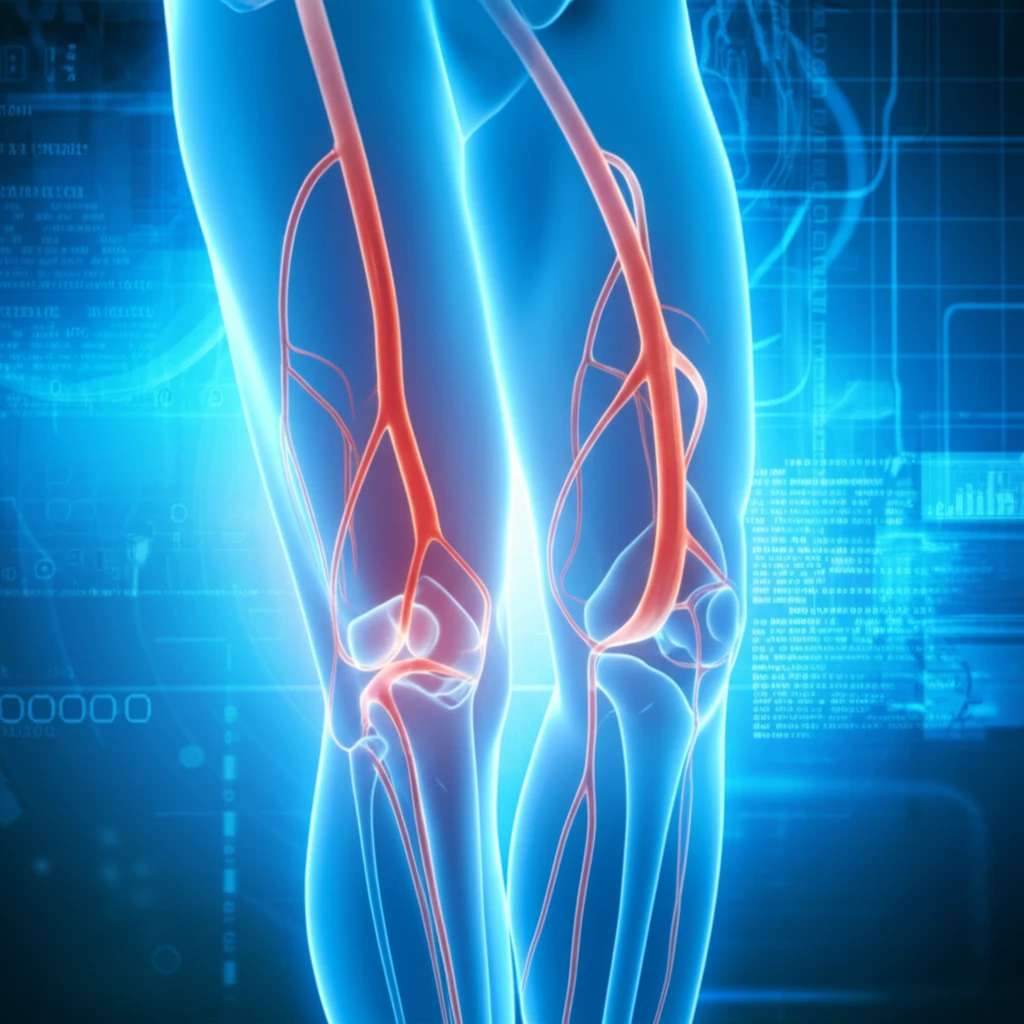
Beyond the Scan: Revolutionizing PAD Detection with Non-Contrast MR Angiography
"New Research Highlights Cutting-Edge Imaging Techniques to Diagnose Peripheral Artery Disease Without Invasive Procedures."
Peripheral Artery Disease (PAD), a condition marked by the narrowing of arteries, often goes unnoticed until it progresses, potentially leading to severe complications like limb amputation. Traditional diagnostic methods often involve invasive procedures or the use of contrast agents, which carry risks. However, recent advancements in medical imaging are offering new hope. Non-contrast MR angiography is emerging as a powerful, non-invasive tool, promising a safer and more effective way to detect and characterize PAD.
This article delves into a groundbreaking study that compares the diagnostic accuracy of non-contrast MR angiography protocols with the conventional, contrast-enhanced method. The research focuses on two primary non-contrast techniques performed at 3T (a type of MRI machine), assessing their ability to evaluate lower extremity PAD. The goal is to determine if these innovative methods can match the effectiveness of traditional approaches while minimizing patient risk.
The study's findings have significant implications for patient care, offering potential alternatives that could transform how PAD is diagnosed and managed. By exploring these new approaches, we can better understand the potential for safer, more accurate, and more accessible diagnostic tools in the fight against PAD.
Unveiling the Power of Non-Contrast MR Angiography

Non-contrast MR angiography utilizes advanced imaging techniques that do not require the use of gadolinium-based contrast agents. This is a significant advantage, as contrast agents can pose risks, including allergic reactions and nephrogenic systemic fibrosis, particularly for patients with kidney problems. The core of these techniques lies in capturing detailed images of blood vessels without the need for these agents.
- QISS (Quiescent-interval single-shot): Uses a single-shot approach, minimizing motion artifacts and providing clear vessel images.
- QIR (Quadruple Inversion Recovery): Improves vessel clarity by using a specific preparation sequence.
- ECG-FSE (Electrocardiogram-gated fast spin echo): Synchronizes imaging with the heart's rhythm, reducing motion blur.
The Future of PAD Diagnosis: A Brighter Outlook
The research highlights the promising potential of non-contrast MR angiography in the diagnosis of PAD. As technology continues to evolve, these methods could become the new standard of care, offering a safer and more effective approach to diagnosing and managing this widespread condition. By embracing these advancements, healthcare providers can enhance patient care and improve outcomes for those affected by PAD.
